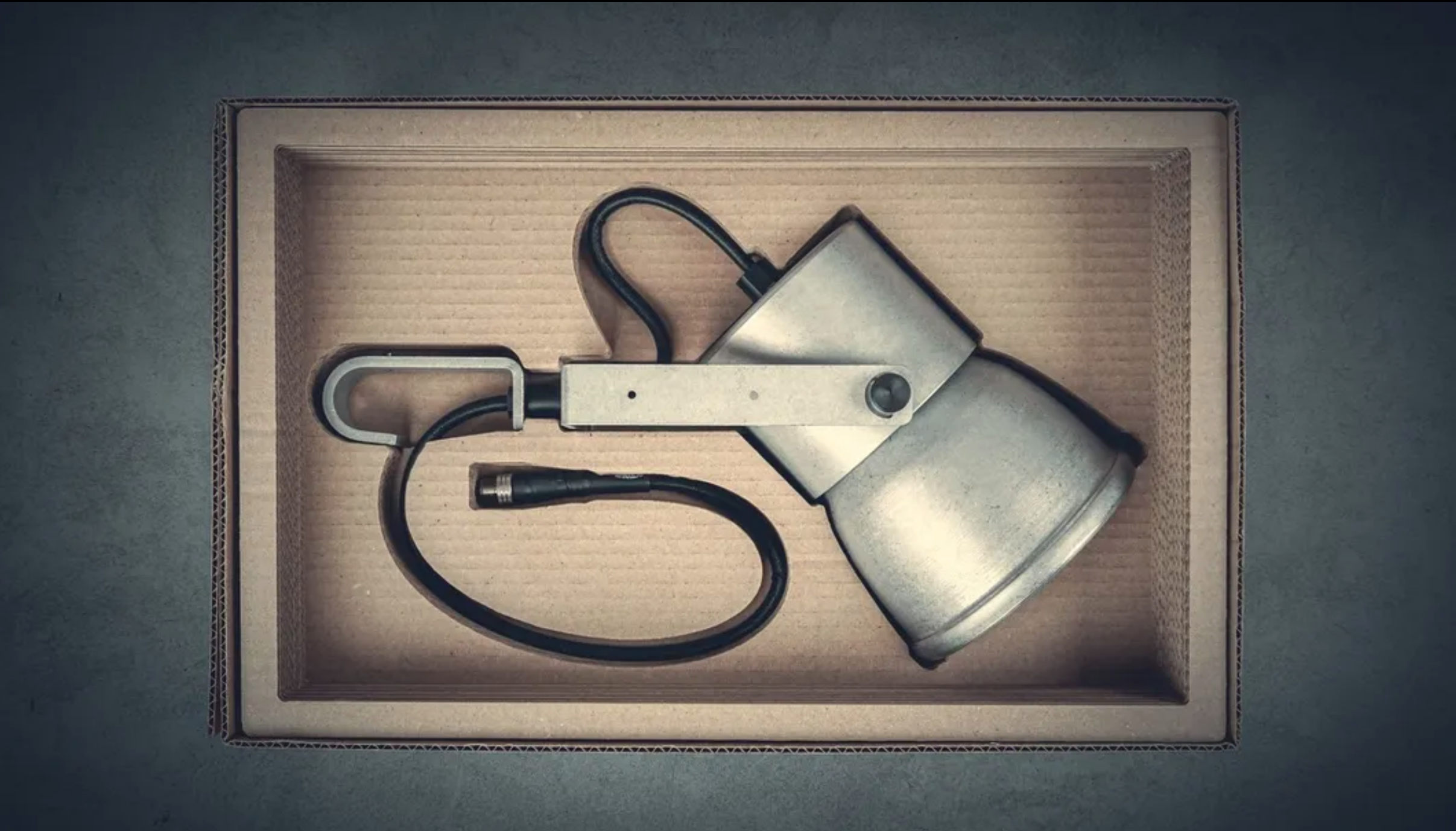We have a graduate called Ply who joined us last year from UCL’s Light and Lighting MSc course. Having followed a traditional path from school to university and then postgraduate study, she joined us with an excellent academic record ready to learn all there is to know about lighting design consultancy.
When I was a graduate I worked for a large engineering consultancy who had an excellent graduate training scheme. Graduates were matched with companies that were willing to impart their knowledge and help the grads gain valuable insights to the wider industry in which they operate. 18 Degrees is only a small company, but I feel passionately that our people should receive similar opportunities to those from a larger organisation. Accordingly, we decided to send Ply for work experience at a lighting manufacturing company so she can learn more about the process of how the lights we specify are made.
We were keen for this to happen at a British factory. Factorylux - manufacturers of a range of pendant and spotlights as well as an innovative Trackpipe system - very kindly offered to host Ply at their factory in Hebden Bridge in Yorkshire. Before we sent Ply on her secondment we wanted to visit the factory ourselves to check out what Factorylux is all about and to be able to witness first-hand what Ply may be expected to experience during her time with the company.
As lighting designers we specify lighting products that are ultimately installed in our client’s projects. Selecting the appropriate lighting equipment is one of the most important aspects of what we do and as you might imagine, there are many options when thinking about what products to specify.
In basic terms, there are three options for procuring lighting equipment in the UK. The first (and most common by far) is lighting products that are manufactured overseas and imported to the UK. The second option is products that are manufactured overseas and subsequently assembled in the UK. And then there is UK manufacturing - Made in Britain. From our experience, the vast majority of lighting products that we encounter on projects fall into the first two categories.
I must admit I didn't quite know what to expect from our visit to Factorylux. Instagram shows close-up photographs of heatsinks and other lighting components. It's hard to gauge what the company setup is actually like, what they do and how they do it.
We left London early and around three-and-a-half hours later we arrived in Hebden Bridge. The landscape from the window of our train changed from city to town to village. Trees and fields replaced buildings and roads. When we arrive we are met by Factorylux’s rep Chris who greets us with coffee and muffins. He tells us that the factory is just a 25-minute walk along the Rochdale Canal from Hebden Bridge station. En-route we pass barges, little cottages and people - most of whom Chris seemed to know. We were greeted with an “‘ow-do” even by those he didn’t.
On arrival, we were met by Factorylux’s founders Stan Wilson and Sophie Gollop, a husband and wife team who run the business - in their own image in many ways.
After falling in love with the old-school factory pendants which were ubiquitous in workshops and factories in the north of England, Stan’s initial business plan was salvaging old lights from redundant textile mills and upcycling them for punters seeking that industrial chic look. It went well but there are only so many factories and mills and hence a finite supply of the lights. So in 2010 he and Sophie set up a small manufacturing facility in Sophie’s parent’s shed and small-scale production of pendant lights commenced.
The factory in Hebden Bridge is about 1000 square metres, somewhat larger than your average garden shed. In here there are about a dozen people who work across the various stages of manufacturing turning raw materials into finished products. Sophie is the MD and runs the show. They collaborate with local suppliers to produce as many components as possible here in the UK. That's a dozen jobs in the small town of Hebden Bridge and more still in the supply chain besides.
When we arrive it's lunchtime. Stan has cooked and we sit down to a delicious home-cooked meal and break bread with the team. This is not something specially laid on for us, it is what happens every day, with different members of the team taking turns to cook lunch for their colleagues. I sit next to Johnny (a physicist who talks to us about the idiosyncrasies of heat sinking while eating rice, salad and grilled chicken. We shoot the breeze with a young chap called John about the ups and downs of Instagram - he looks after the social at Factorylux in his spare time when not actually making lights (his main job).
A tour of the factory is next, the journey from goods in through to packaging and goods out. There is thought and innovation evident at every step of the process. It's impossible to spend more than 10 minutes in Stan’s company without hearing the words ‘sustainability’ and especially ‘circular economy’. Green manufacturing principles run throughout everything that Factorylux does. Some examples: instead of galvanising or painting their products silver they have a stone rumbling machine which came from the aerospace industry and was modified to suit their own purposes. In the rumbler, the metalwork is gently shaken in amongst some special conical pebbles for about half an hour and comes out gleaming and with a sublime textured finish. No dipping at extraordinarily high temperatures, no paint fumes, minimal energy use. It’s the manufacturing equivalent of Levi 501s ( thankfully Stan - no Nick Kamen - didn't strip to his underwear like in the famous advert).
A gravity powered (sloping) conveyor system moves products through the various stages of the manufacturing process. QA checks occur at every point with personal accountability. At the end of this there's a gonio spectrometer that provides credible photometric data which provides their offer with the credibility that lighting designers such as ourselves need to specify their products on our projects.
The final step is the packaging area. Stan is positively beaming as he purrs over his High-Frequency Oscillating Knife machine. It is a kind of large flatbed contraption (previously used in a hot air balloon factory) that cuts cardboard into specific shapes for boxes and packing inserts. Everything fits perfectly, no need for filling paper or plastic foam pellets. No wastage, the material is recycled cardboard, to be easily recycled again afterwards.
The takeaway impression was that Factorylux is a great example of British manufacturing. They genuinely care about their product, how it's made and why it's important. Their staff are great, they are engaged and the culture within the company is excellent. Everyone I spoke to seemed to genuinely wish to make a difference and as a result of this, they do.
When Ply does her training there we've been told that she'll be making lights just like the rest of the staff, no special treatment. She’ll be part of the team, given respect, encouragement and training like everyone else at Factorylux. Having met them, we’d expect no less.
Afterwards I reflected on how little you know of a company from their online presence: the website, Instagram posts, etc. Having got to know Factorylux and seen first-hand what they are all about, we will in future specify their products with absolute confidence, knowing that the people who made these lights actually care and are well looked after. I'm not sure that's always the case, especially for some of the overseas lighting brands that tend to be nominated by contractors offering ‘value engineering’ alternatives to our clients.
The Factoryluxes of this world exist because people purchase their products, plain and simple as that. As designers, architects, interior designers, and clients, we need to do our bit in supporting the likes of Factorylux (and the other excellent UK lighting manufacturers out there); the alternative is that we must rely on imported goods only, uncertain supply chain integrity and fluctuations in cost and delivery time. The old cliche of ‘use it or lose it’ seems very relevant to the British manufacturing industry now more than ever.
Paul Beale
Note: 18 Degrees financed this trip and as an independent consultant does not ever receive any rewards, compensation or inducements from Factorylux or any other manufacturer. Stan did, however, kindly treat us to a pint and some chips in the Robin Hood at the end of our day.








